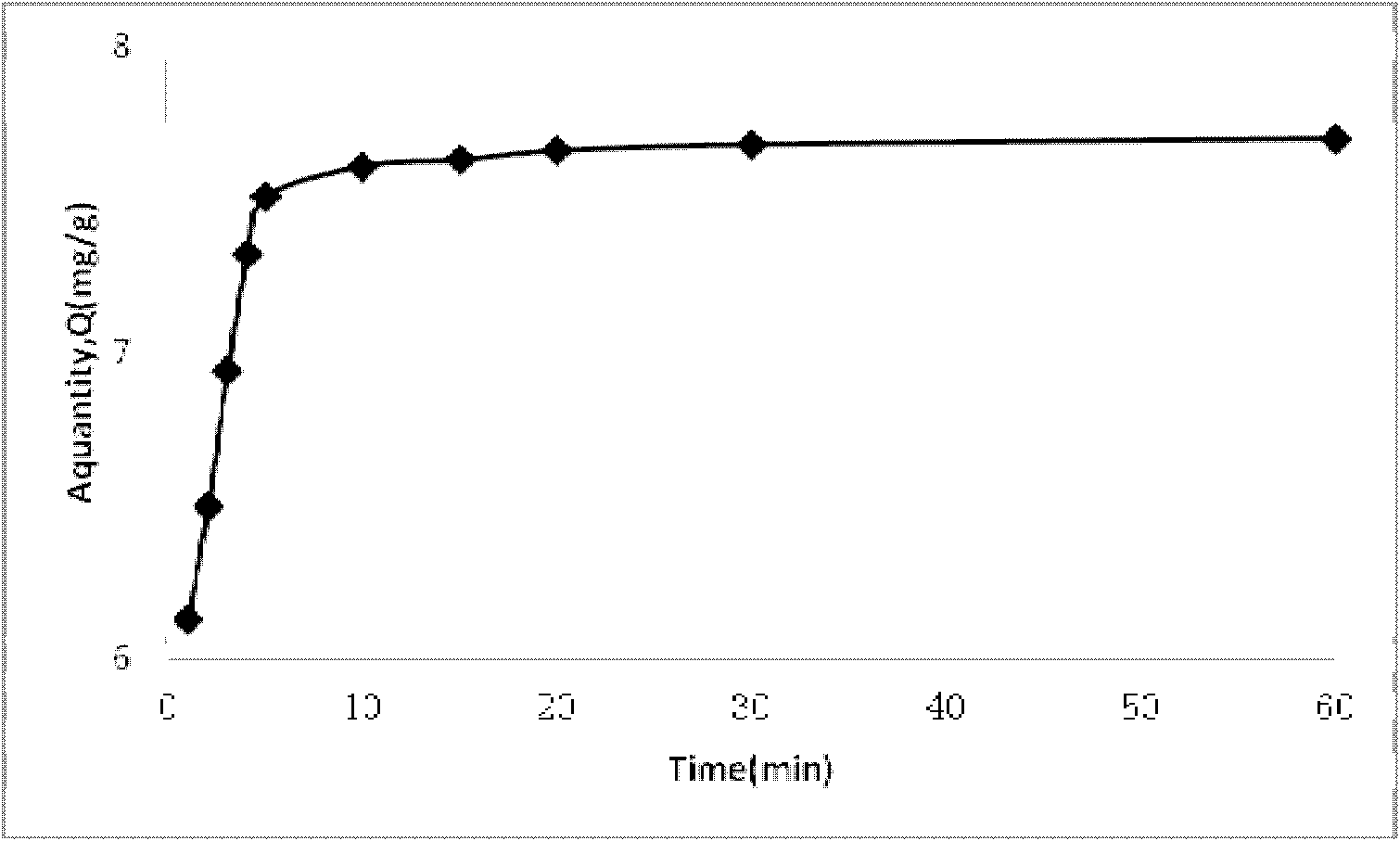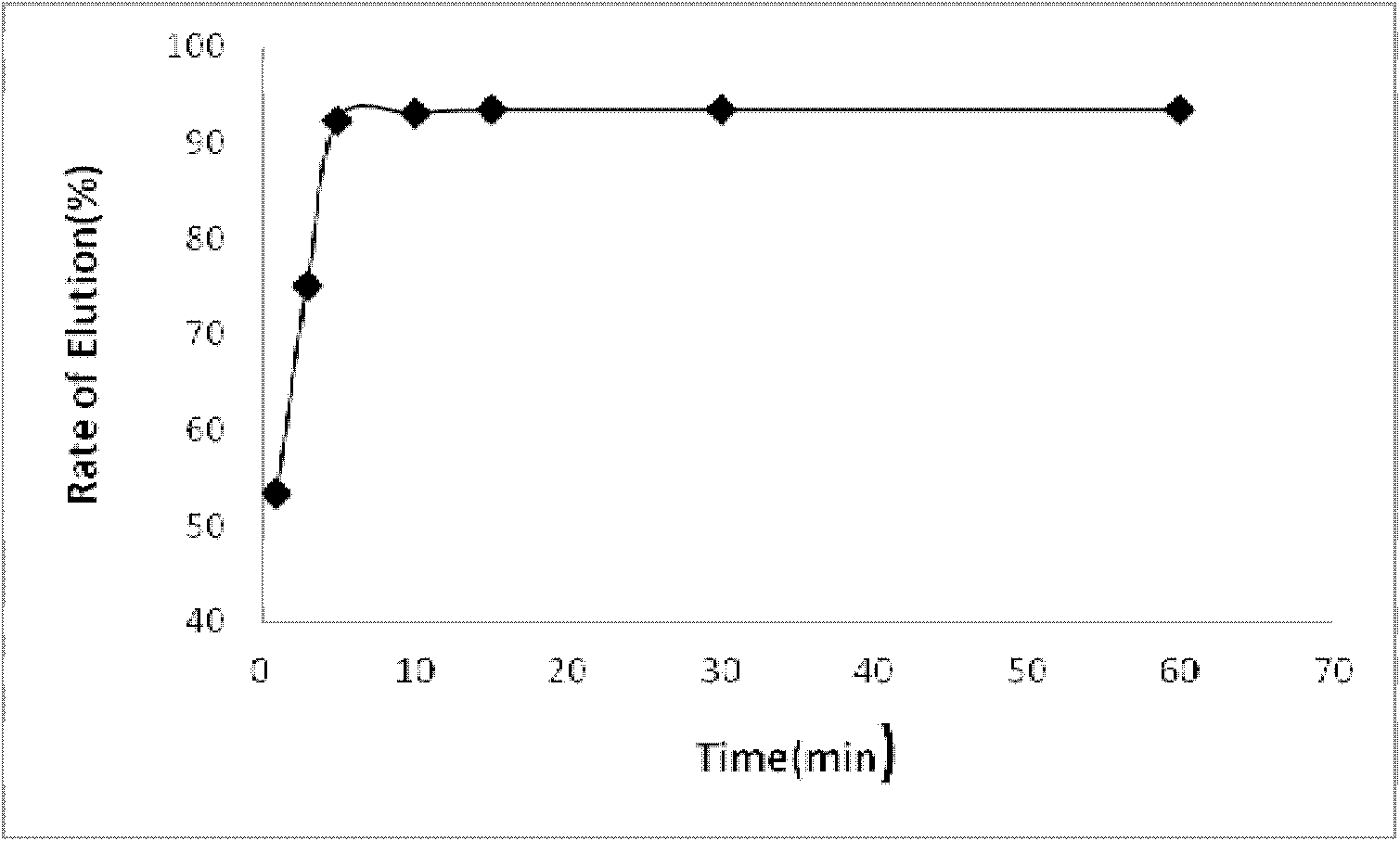Preparation method and application of phenylethanolamine A molecularly-imprinted material
A technology of phenylethanolamine and molecular imprinting, which is applied in the preparation of surface molecular imprinting materials capable of detecting residues of phenylethanolamine A, and in the application field of surface molecular imprinting materials, which can solve the problem of decreased sensitivity of the detection method, large impurity interference, and recovery of the accuracy of detection results. low efficiency and other problems, to achieve the effect of low preparation cost, short elution time and simple preparation process
- Summary
- Abstract
- Description
- Claims
- Application Information
AI Technical Summary
Problems solved by technology
Method used
Image
Examples
Embodiment 1
[0027] Weigh 30 g of silica gel (particle size 5 μm), add 150 mL of 10% methanesulfonic acid aqueous solution, stir at reflux temperature for 8 h, wash with distilled water until neutral, and dry at 65° C. for 12 h to obtain activated silica gel. Add 10g of activated silica gel to 400mL of water, add 10mL of 3-(methacryloyloxy)propyltrimethoxysilane, stir and react at 50°C for 24h, wash the product with water and ethanol, and dry at 65°C for 12h to obtain a double bond Composite silicone. Add 200mL of water and 3g of double-bonded silica gel into the flask, stir for 1h, then add 10mL of methacrylic acid, in N 2 Stir for 1 h under protection, add 1 mL of 20% ammonium persulfate solution, heat up to 70° C., stir for graft polymerization, and obtain grafted particles after 24 h. Soxhlet extraction with ethanol for 24 hours, and then dried at 65°C for 12 hours before use. Take 50mL concentration as 300mg·L -1 Aqueous solution of phenylethanolamine A, add 1g of grafted particles...
Embodiment 2
[0034] Weigh 30 g of silica gel (particle size 40 μm), add 150 mL of 10% methanesulfonic acid aqueous solution, stir at reflux temperature for 8 h, wash with distilled water until neutral, and dry at 65° C. for 12 h to obtain activated silica gel. Add 5g of activated silica gel to 200mL of water, add 5mL of 3-(methacryloyloxy)propyltrimethoxysilane, stir and react at 40°C for 24h, wash the product with water and ethanol, and dry at 65°C for 12h to obtain a double bond Composite silicone. Add 200mL of water and 3g of double-bonded silica gel into the flask, stir for 1h, then add 10mL of methacrylic acid, in N 2 Stir for 1 h under protection, add 1 mL of 10% ammonium persulfate solution, heat up to 70° C., stir for graft polymerization, and obtain grafted particles after 24 h. Soxhlet extraction with ethanol for 24 hours, and then dried at 65°C for 12 hours before use. Take 50mL concentration as 400mg·L -1 Aqueous solution of phenylethanolamine A, add 1g of grafted particles ...
Embodiment 3
[0036] Weigh 30 g of silica gel (particle size 120 μm), add 150 mL of 20% hydrochloric acid aqueous solution, stir at reflux temperature for 8 h, wash with distilled water until neutral, and dry at 65° C. for 12 h to obtain activated silica gel. Add 5g of activated silica gel to 200mL of water, add 5mL of 3-(methacryloyloxy)propyltrimethoxysilane, stir and react at 60°C for 24h, wash the product with water and ethanol, and dry at 65°C for 12h to obtain a double bond Composite silicone. Add 200mL of water and 3g of double-bonded silica gel into the flask, stir for 1h, then add 10mL of methacrylic acid, stir for 1h under the protection of N2, add 1mL of 10% ammonium persulfate solution, heat up to 70°C, and stir for graft polymerization , After 24h, the grafted particles were obtained. Soxhlet extraction with ethanol for 24 hours, and then dried at 65°C for 12 hours before use. Take 50mL concentration as 500mg·L -1 Aqueous solution of phenylethanolamine A, add 1g of grafted p...
PUM
| Property | Measurement | Unit |
|---|---|---|
| Particle size | aaaaa | aaaaa |
| Saturated adsorption capacity | aaaaa | aaaaa |
Abstract
Description
Claims
Application Information
 Login to View More
Login to View More - R&D
- Intellectual Property
- Life Sciences
- Materials
- Tech Scout
- Unparalleled Data Quality
- Higher Quality Content
- 60% Fewer Hallucinations
Browse by: Latest US Patents, China's latest patents, Technical Efficacy Thesaurus, Application Domain, Technology Topic, Popular Technical Reports.
© 2025 PatSnap. All rights reserved.Legal|Privacy policy|Modern Slavery Act Transparency Statement|Sitemap|About US| Contact US: help@patsnap.com



